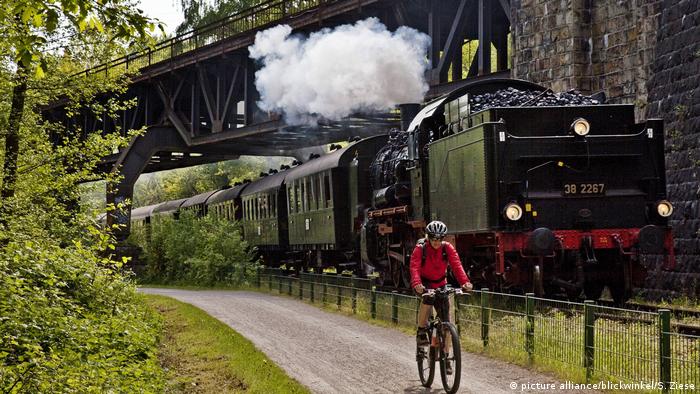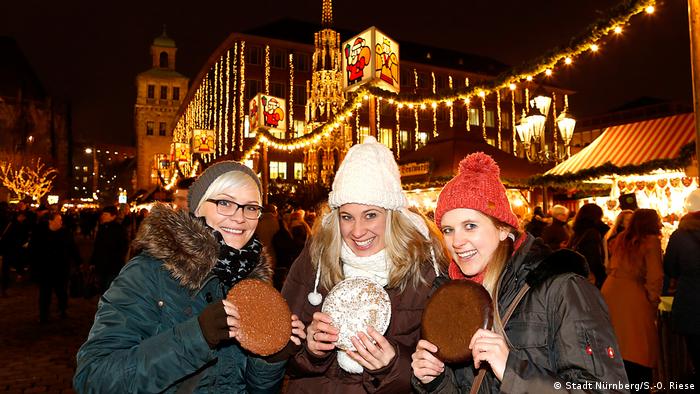A colorful cultural landscape grew out of the dreary gray of old collieries and industrial plants, green parks and rivers turned blue again. The Ruhr area, the largest industrial region in Germany, has reinvented itself.
Zollverein colliery, Essen
The Zollverein colliery in Essen used to be the largest hard coal mine in the world. Up to 8,000 miners worked around the clock above and below ground. Today the colliery is an architectural and industrial monument and has been a UNESCO World Heritage Site since 2001. The Ruhr Museum acts as a memory of the region. It tells about people and machines, about hard work and the life of the miners back then.
North Duisburg Landscape Park
An important location for steel production was Duisburg. Millions of tons of pig iron were produced in the blast furnaces of the decommissioned Duisburg-Meiderich iron and steel works alone. The steel colossus has been open to visitors since 1994. It is a stage and a sculpture at the same time, staged in color by the British light artist Jonathan Park.
Rheinorange, Duisburg
The steel sculpture "Rheinorange" marks the confluence of the Ruhr and the Rhine. From here, the steel of the Ruhr area was shipped around the world. The sculpture stands in the middle of the Duisburg port area. At the peak of industrialization, it was the center of all shipping on the Rhine. Today Duisburg has the largest inland port in Europe. A harbor tour is an experience.
Gasometer Oberhausen
The Gasometer is the landmark of the city of Oberhausen. Towers like this stored the gas that was produced during coke production and used it to supply the surrounding industrial plants. The Gasometer was shut down in 1988 and has since been used as a spectacular exhibition hall, which has already been used by artists such as Christo and Olafur Eliasson. The roof serves as a viewing platform.
Century Hall Bochum
The huge hall was built in 1902 as an exhibition space for a trade exhibition, later it was part of the Bochum cast steel works. The steel construction with an area of ​​8,900 square meters is now used for events and is the central venue for the "Ruhrtriennale" music and theater festival, which takes place every summer.
Westphalian Industrial Museum in Dortmund
At the beginning of the 20th century there were 17 coking plants in the Ruhr area. They turned coal into coke, which is essential for steel smelting. The Hansa coking plant has been a listed building since 1998 and is part of the Westphalian Industrial Museum. The history of the industrial age can be experienced at eight historic locations. The huge compressor hall of the Hansa coking plant is shown.
German Mining Museum Bochum
It is the largest mining museum in the world and one of the most visited museums in Germany. The facility was built in the mid-19th century to train miners under realistic conditions. Visitors can find out exactly what it looked like in the show mine under the museum grounds.
Grimberg Bridge, Rhine-Herne Canal
When the mining industry (collective term for iron and steel industry) was still booming, rivers were forced into canals and waste water was discharged. In addition, there were hundreds of kilometers of canals that made transport to the Rhine possible. Water landscapes and local recreation areas were renatured from it. The many new bridges with surprising architecture are eye-catchers.
Heap Rheinpreussen, Moers
The spoil heaps are the mountains of the Ruhr area. When coal was mined underground, enormous amounts of rubble and rubble were created, which were heaped up to form huge mounds. 20 of over 200 are accessible. Once at the summit, visitors are often greeted with impressive landscape art and imposing sculptures. Otto Piene's "Light" is based on a miner's lamp.
Industrial Heritage Route
Those who travel here experience former smelting works, collieries, coking plants or heaps in an exciting tour through the region. There are circuits for both drivers and cyclists. The road circuit is 400 kilometers long, the network of cycle paths even 700 kilometers. Both routes promise an intensive encounter with the history and present of the Ruhr area.





